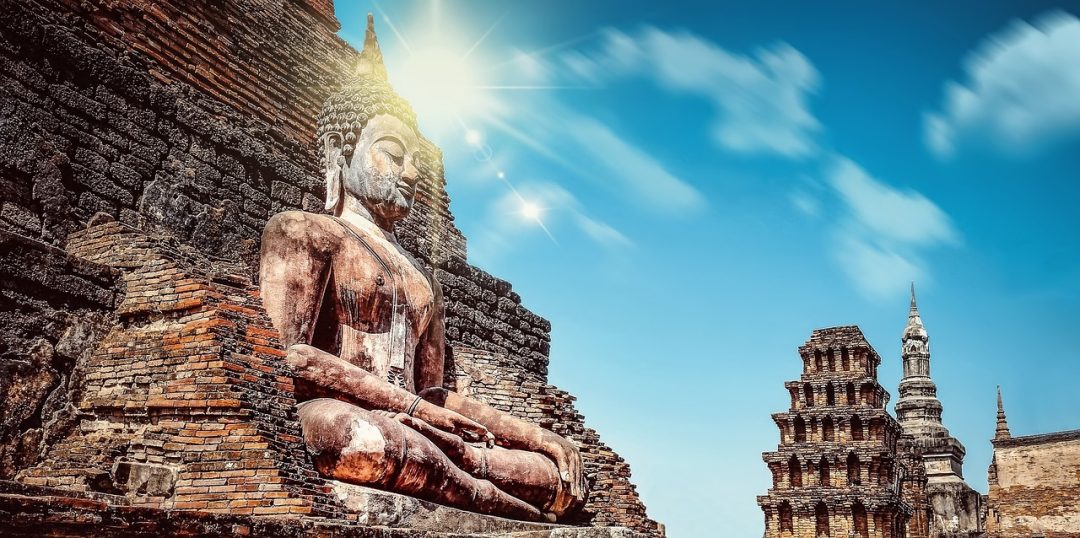When the people were reeling under unanswerable questions of sufferings and fate, under the oppression of caste and superstitions, and under the unbearable yoke of Vedas, there set out a man determined to find reasonable solutions. His search culminated in his sitting under the Bothi tree in deep meditation. He got enlightened and set out to free the suffering humanity from its entanglements. It was the Buddha who enlightened the world with Buddhism!
Siddhartha Gautama Buddha who became the Buddha
The rise of Buddhism was facilitated by the conditions of Hindu society on the eve of Buddha’s birth. When Siddharta Gautama, who later came to be called the Buddha, was born in a royal family 2600 years ago, Hinduism had already lost its former glory since many kinds of abuses and superstitions had crept into it.
 The Brahmanas had a monopoly in the field of religion and they behaved as unscrupulous human beings. They encouraged superstitions and oppressed people in the name of caste and religion. As Siddharta grew up, he was perturbed at the sufferings of human beings. Neither the Vedas nor the learned Brahmins could find solutions for his questions. As the Buddhists refer, The Four Great Sights affected him so profoundly that one fine evening he decided to leave the worldly life renouncing his kingdom, young wife and little son, richness and pleasures of royalty and all the worldly things. He wandered in search of the answer until he got enlightenment under the Bodhi tree. From that time onwards he came to be called Buddha the Enlightened He began his teaching of Dharma.
The Brahmanas had a monopoly in the field of religion and they behaved as unscrupulous human beings. They encouraged superstitions and oppressed people in the name of caste and religion. As Siddharta grew up, he was perturbed at the sufferings of human beings. Neither the Vedas nor the learned Brahmins could find solutions for his questions. As the Buddhists refer, The Four Great Sights affected him so profoundly that one fine evening he decided to leave the worldly life renouncing his kingdom, young wife and little son, richness and pleasures of royalty and all the worldly things. He wandered in search of the answer until he got enlightenment under the Bodhi tree. From that time onwards he came to be called Buddha the Enlightened He began his teaching of Dharma.
Buddhism is More a Way of Living than a Religion
Buddha never meant to start a new religion when he preached Buddhism. He only wanted to show humanity a way to escape from suffering. His teaching was a method for the elimination of suffering. It is a philosophy of practical life. It is a way of living for every human being, irrespective of religion, to solve the problems of life.
By following the path of Dharma, anyone can attain happiness on this earth itself. His noble eightfold path is nothing but the righteous way of living. It is more a practical living that provides a greater and wider outlook about the nature of life than a metaphysical doctrinal manifestation.
The Core Teaching of Buddhism
Buddhism teaches that every action has its consequences and change in life is inevitable. Buddhism believed that worldly suffering is caused by attachment, ignorance, and hatred.
The core of Buddha’s teaching was that life was full of suffering which could be removed only by the removal of desires. Meditation has an important place in Buddhism since it taught the method of changing oneself in order to achieve the qualities of awareness, kindness, and wisdom to adapt to righteous living.
The Four Noble Truths and the Eightfold Path
1) The Noble Truth of Suffering stating that suffering is inevitable in life. All here is transient, sorrowful and full of pain.
2) The Noble Truth of the Cause of Suffering which meant that desire is the cause of all evils and hence it must be removed.
3) The Noble Truth of the Cessation of Suffering taught that sorrow can be ended only by the limitation of desires.
4) The Noble Truth of the Path that Leads to the Cessation of Suffering (The Noble Eightfold Path). This taught the eightfold path to attain bliss and end desires. The Eightfold path contained the right views, right intention, right speech, right action, right living, right effort, right mindfulness, and right concentration.
Buddha’s Ethical Concept
Buddha’s concept of religion was purely ethical. He did not give importance to worship and rituals. He emphasized only the right to conduct. He believed if the conduct is right everything will be right and humanity can find bliss eventually. Buddha viewed that saintliness and contentment were4 to be found not in the knowledge of the universe and God but in selfless and virtuous labor and living.





